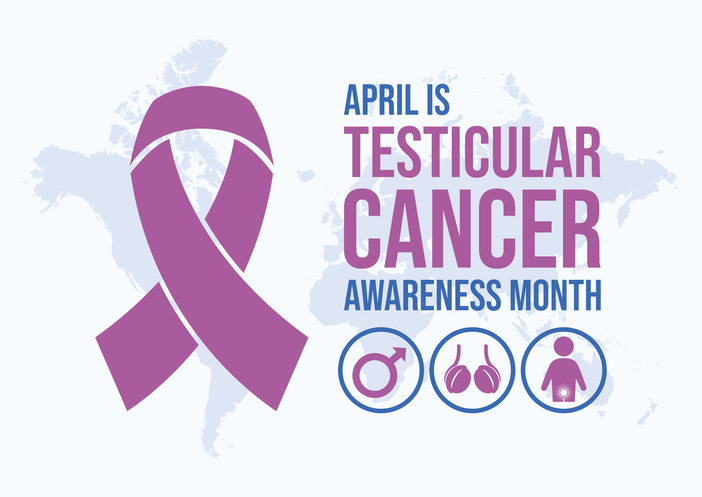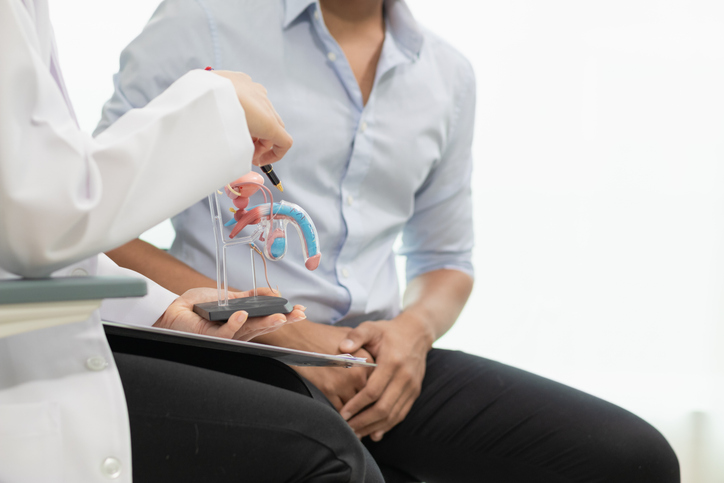
April is Testicular Cancer Awareness Month but for many in their 20s to 40s, it’s not even on the radar.
This is why more open conversations are needed. While most cancers tend to develop later in life, testicular cancer often appears much earlier, typically between the ages of 15 and 45. It’s a stage when most men feel healthy and are unlikely to consider themselves at risk, which can lead to early signs being overlooked.
Raising awareness starts with clarity. To understand why this cancer matters, it helps to first look at what it is and who it tends to affect.
What Is Testicular Cancer and Who Is at Risk?
Because prostate and testicular cancer both affect the male reproductive system, they are sometimes mistaken as being the same. This mix-up is understandable, especially since both are often mentioned in discussions about men’s health. However, the difference between prostate cancer and testicular cancer is clear when you look at where they develop and who they affect.
Prostate cancer typically occurs in men over the age of 50. As its name implies, it affects the prostate, a small gland that produces seminal fluid. In contrast, testicular cancer affects the testicles, the organ that is responsible for producing sperm and male hormones. It tends to appear at a much younger age, often affecting men in their teens through to their forties.
To better understand how testicular cancer behaves, it helps to first understand what it is.

Types of Testicular Cancer
Testicular cancer happens when abnormal cells in the testicles begin to grow uncontrollably. Most cases are classified as germ cell tumours, which are further divided into seminomas and non-seminomas. Some men might have a combination of both types within the same tumour.
Seminomas tend to grow more slowly. They occur most often in younger men, although a less common type can appear in older men. Some seminomas produce a hormone called human chorionic gonadotropin (hCG), which can be detected through a beta-hCG blood test if included as part of a health screening panel. If seminoma spreads beyond the testicle, treatment options may include chemotherapy or radiation. Depending on the stage and clinical findings, surgery might also be recommended.
Non-seminomas on the other hand grow and spread more quickly. This group includes several subtypes:
• Embryonal carcinoma, which can be more aggressive
• Yolk sac tumours, commonly seen in children but can also develop in adults
• Choriocarcinoma, a rare subtype that spreads rapidly
• Teratoma, which might not respond to chemotherapy and is often treated with surgery
In rare cases, tumours might form in the supportive tissues of the testicle rather than the germ cells. These are known as stromal tumours. The main types include:
• Leydig cell tumours, which originate from cells that produce testosterone
• Sertoli cell tumours, which form in cells that support sperm development
These tumours are uncommon, and most are managed with surgical removal.
Testicular Cancer’s Causes and Risk Factors
The exact cause of testicular cancer is not fully understood, but several risk factors have been identified. These do not guarantee that someone will develop the condition, but they might increase the likelihood.
One of the strongest known risk factors is cryptorchidism or undescended testicle(s). This is a condition where one or both testicles fail to descend into the scrotum before birth. The risk of testicular cancer remains higher even after surgical correction (orchiopexy), especially if the procedure is done later in childhood or after puberty.
Genetic factors also play a role. While having a close relative with testicular cancer might increase your risk, most men diagnosed with the condition do not have a known family history.
Other contributing factors include:
• A previous diagnosis in one testicle, which raises the chance of developing cancer in the other
• Age, as most cases occur in men between 15 and 35
It’s also worth noting that many men diagnosed with testicular cancer have no identifiable risk factors. This is why awareness is important — particularly for younger men who might not consider themselves at risk.
Testicular Cancer’s Symptoms to Watch Out For
Testicular cancer symptoms can vary, and in many cases, the condition develops with few noticeable signs at the start. The most common one is a painless lump or swelling in one testicle. Some might also notice a sense of heaviness in the scrotum or a dull ache in the lower abdomen or groin.
Other symptoms can include:
• A sudden build-up of fluid in the scrotum
• Pain or discomfort in a testicle or the scrotum
• A feeling of firmness or uneven texture in the testicle
• Back pain, if the cancer has spread to lymph nodes
While the above symptoms can point to testicular cancer, they aren’t always caused by it. There are other conditions that might look or feel similar, and it’s important to know the difference.
Here are some that are commonly mistaken for testicular cancer:
• Epidermoid Cyst – A harmless lump inside the testicle that can feel like a tumour.
• Epididymitis – Inflammation of the tube behind the testicle, often caused by bacterial infection or STIs, and typically presents with pain and swelling.
• Hydrocele – A fluid-filled sac around the testicle that causes painless swelling in the scrotum
• Inguinal Hernia – This occurs when part of the intestine pushes into the groin, creating a noticeable bulge near the scrotum.
• Orchitis – Inflammation of one or both testicles, usually due to viral or bacterial infections, and often causes pain and tenderness.
• Spermatocele – A fluid-filled cyst near the epididymis that is usually painless and non-cancerous.
• Testicular Torsion – A sudden twisting of the spermatic cord that causes severe pain and requires urgent medical attention.
• Varicocele – Enlarged veins in the scrotum, often described as feeling like a “bag of worms” and may cause discomfort or heaviness.
Think It Might Be Testicular Cancer? Act Early
A lump, swelling, or discomfort in the testicle isn’t always painful, which is why it’s often easy to dismiss or put off. But these subtle changes can sometimes signal testicular cancer, and the only way to know for sure is to have it checked. Acting early can bring clarity, offer peace of mind, and allow for timely care if something needs attention.
To support this, selected Healthway Screening packages include tumour marker blood tests, such as beta-hCG, which are relevant when evaluating testicular symptoms. These tests help doctors decide whether further assessment is needed, especially when physical findings alone don’t offer a clear answer.
If additional evaluation is required, this can be followed up at Urohealth Medical Clinic, where our urology team provides consultation and care for individuals needing more targeted assessment. With our health screening centres and specialist clinics conveniently located across Singapore, it’s easy to get checked early and that decision could make all the difference.





